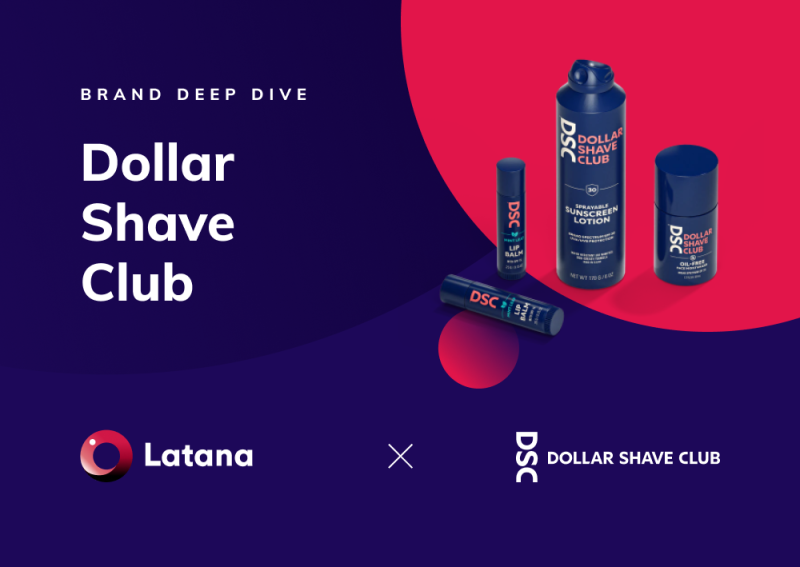Have you ever purchased a book because you were drawn to its cover? The answer is probably yes. Naturally, human beings enjoy making decisions that they feel reflect their likes, dislikes, and preferences. And that's something that smart brand managers know — and use it to impact consumer behavior.
Brands influence consumer behavior by finding ways to fit in with consumers' “self-image”. Adverts show levels of happiness and types of lifestyles that consumers want to have — and those act as symbols of what the brand represents. Essentially, a brand's impact on consumer behavior depends a great deal on how consumers perceive and relate to the brand.
Want to know more? In this article, we'll discuss the different ways in which branding affects consumer behavior. We'll also examine why it’s important to know how your branding is perceived by consumers.
Why Is It Important to Understand How Your Brand Is Perceived in 2022?
Brand perception is the sum of the experiences, attitudes, and feelings people have with a product or service. Positive brand perception among target audiences is what moves the needle for brands — after all, 77% of consumers are more likely to recommend a brand to others after having a positive experience with it.
Think about it: Every ad from a skincare brand seeks to sway the emotions of consumers to create favorable brand perception. Using eye-catching images or well-known celebrities to get noticed, skincare brands understand that most consumers value beauty — thus, they use beautiful images to spark emotions. However, they can’t control which emotions are sparked.
In this case, it's the customer who determines their perception of your brand. Regardless of the kind of product that you are marketing, the way consumers perceive your brand can be make or break.
In the end, it’s the role of a brand to understand its target audience and do what it takes to improve its perception. This can be achieved through myriad methods — such as creating branded TV spots, YouTube ads, or asking customers to review their products online. Such interactions help can improve consumers’ perception of brands
A brand owner may feel that they understand exactly what their brand stands for. However, their brand image may only reflect their aspirations, rather than what consumers want to see and feel. For example, a study by Brain and Company shows that, although 80% of companies believe they offer great services, only 8% of consumers actually agree.
Though it may be a tough pill to swallow, consumers are the owners of brand perception, not you. No matter type of message or image you want your brand to project, it all comes down to how consumers think and feel about it. When consumers hear, see, or interact with a brand, they develop feelings and thoughts towards it. It's the sum of all these feelings and thoughts — by all consumers — that truly make up brand perception.
How to Measure Brand Perception
Understanding consumers’ perception of your brand allows you to gauge whether your brand has a positive or negative image. Such insights can help you to make sound decisions as far as promoting your brand is concerned.
Furthermore, brand perception data can help you understand what consumers like or don’t like about your brand — which will enable you to quickly correct any mistakes in your branding that might be harming your perception. Measuring this data over time will also show whether or not your brand marketing is making a difference.
However, there are a few different ways with which brand managers and marketers can measure brand perception. They include the following:
1. Surveys and Focus Groups
Surveys and focus groups are great tools to measure and, thus, improve brand perception.
They work by conducting online or face-to-face surveys with consumers and asking specific questions that will help you understand how your brand is perceived.
2. Brand Tracking
Brand tracking is another method that can help brand owners to understand changes in brand perception over time. The data it provides helps to quantify the returns on marketing campaigns and influences brand strategies.
With the use of brand tracking, brands can measure consumer perception almost instantaneously — breaking data down into the target audiences most important to them. Brands can also compare brand perception across different markets and competitors, allowing for a more holistic view of the subject.
3. Social Listening
Another way to track brand perception is to use social listening tools to monitor social media platforms for the mentions of their brands.
This will help them figure out what consumers are saying about their brand and determine the impact of your branding. Furthermore, it also provides brands an opportunity to give timely responses to any queries raised by consumers — which is an important step to improve brand perception.
5 Ways in Which Branding Can Affect Consumer Behavior
Branding shapes human perception surrounding familiarity and attraction — and, thus, plays a significant role in fostering loyal consumers and increasing sales.
Branding affects consumer behavior in the following ways:
1. Consumer Perception
When you plant a clear brand message in the minds of consumers, they very well may connect with that message and consider using your brand. If the message relayed to your target audience is consistent and memorable enough to get and hold their attention, it's almost like a seed planted in their minds — one which will begin to develop over time into their brand perception.
A brand's image is not the product itself, nor is it the messaging created by marketers. It's the personal perception of a brand's products or services that has been created in the minds of consumers. If this perception aligns well with the needs of the consumers, there's a good chance that they can develop brand loyalty.
In fact, the Temkin Group conducted a study and found that companies that make $1 billion annually can make an additional $700 million within 3 years by investing in consumer perception. Not too shabby!
2. Purchasing Decisions
The process of making a purchase begins when an individual realizes that they have a problem that needs to be solved. There are many steps that go into making a purchase decision — such as research and comparison.
For example, let's say you lose your phone and need to buy a new one. In this scenario, you have two options:
Buy the same phone or look for another brand from the options available.
When making purchasing decisions, well-established brands have a clear advantage when dealing with consumers. After all, a person with little to no knowledge about phones will likely prefer an iPhone or Samsung over a phone with an unknown brand — not because of its features, but because the brand has gone to great lengths to ensure everyone knows who they are.
3. Peer Influence
According to Nielsen, 92% of consumers trust recommendations from family and friends. This means that a majority of consumers are more likely to make a purchase from a brand that is liked and trusted by their friends and family members. This trust is also extended to other products manufactured by said brand.
But that's not all. According to research from Esteban Kolsky, 72% of consumers will share a positive experience with at least six people. On the other hand, 13% of unhappy customers will share their experience with at least 15 people.
Brands cannot underestimate the impact of peer influence on consumer behavior. Therefore, a marketing strategy that highlights a brand's personality and values rather than just its pricing or features will connect more successfully with consumers.
4. Status and Prestige
There's a reason why small business owners spend days to weeks evaluating logo designs before settling on a perfect one. They understand that their brand image is essential in communicating their value — and the logo, colors, and design aesthetic they choose will all have an impact.
Additionally, branding communicates the perks associated with a brand’s services. For example, many consumers purchase Apple products because of the prestige attached to them. And it’s worth noting that status and prestige convey more than just high price — they also signify credibility, quality, and satisfaction!
5. Builds Trust and Loyalty
Well-executed branding will not only capture the attention of your target audience, but it will also enable them to get to know your brand better.
If done well, this knowledge can be followed by consumer trust in your brand. When consumers trust your brand, they're more likely to buy your products again — and, eventually, this can turn into brand loyalty, which is key to consistent sales and brand growth.
Brand marketers need to ensure consumers understand that their brand offers excellent service and high quality — while also making sure they have customers who can testify to it. A consistent customer experience, strong social media presence, and positive online reviews will all speak to your brand’s trust and build loyalty.
If your focus is on making your customers happy, they're more likely to stick around.
3 Examples of Companies with Strong Branding
Most people could build a small company if push came to shove — but to grow a large, successful one, you need an essential ingredient: you MUST be able to create a brand that everyone will love and talk about.
The best brands in the world didn't necessarily start with higher capital or unfair advantages. They went through the same struggles to gain traction and establish their role in their industry — and we can all gain insights from their marketing strategies.
While these branding case studies won't make your brand an immediate smash hit, you might identify one or two powerful branding techniques with which you can improve your profits.
Thus, we’ve chosen 3 world-famous companies with strong branding and analyzed how consumers respond to their brands:
1. Apple
Apple is a great example of a strong brand. It builds aesthetically-pleasing, innovative technology that's unique — and it markets its products in a way that aligns with the desires of the consumers.
This brand boasts passionate fans who will queue for hours and hours just to be the first ones to get their hands on the latest iPhone — and Apple understands this. Thus, it makes products for its target market: consumers who believe that Apple's products make life easier, better, more fun, and cooler.
Its brand messaging highlights overlapping qualities between its products and its customers: creativity, imagination, and innovation.
The Takeaway: Interestingly, Apple doesn’t include pricing in its branding. Instead, it focuses on the value its products offer and the connections it creates with the consumers.
Thus, brand managers should focus on communicating to consumers how valuable their brand is and personalize their messages so as to better connect with them.
2. Tesla
Tesla, a luxurious and forward-thinking auto brand, is more expensive than its competitors. Due to this fact, it doesn't focus on pricing in its branding — but, instead, it places a great deal of focus on the quality of its cars. By focusing on the high-quality features that its competitor brands don’t have, consumers aren't as concerned with the high prices of Tesla cars.
Furthermore, Tesla's cars are eco-friendly, long-range, and electric. Again, the company's branding message makes it clear that its cars are different from standard electric cars because they have a longer range and are of higher quality.
In this way, Tesla has planted the message of “uniqueness” and “quality” in the minds of consumers — which is why many prefer Tesla cars over the competition.
The Takeaway: When determining your brand USPs — aka the selling points that set you apart from the competition — it's best to focus on what will resonate well with consumers.
If Tesla has decided to focus on its expensive prices instead of the features that set it apart and create value, consumers might have not been as interested and perhaps preferred cheaper brands.
3. Coca-Cola
Coca-Cola is perhaps the most recognizable brand in the world. Thus, there are a number of branding lessons that we can learn from this brand's past successes and failures.
For example, Coca-Cola’s leading competitor, Pepsi, once started to gain traction through a successful ad campaign — and its slightly sweeter taste was consistently winning over consumers.
Thus, Coca-Cola decided to come up with a response. First, the brand made some changes to its famous Coca-Cola formula — which was then branded as “New Coke”.
Somewhat surprisingly, Coca-Cola lovers became angry. You see, Coca-Cola made the grave error of not remaining consistent. By changing the flavor of its flagship drink, the brand unknowingly attacked its own value proposition. After realizing it had made a mistake, it returned Coca-Cola’s original formula to the market and labeled it as “Coca-Cola Classic”.
And that’s how the problem was solved.
The Takeaway: When growing your brand, not everything can or should remain the same. Sometimes you need to change things up to find success.
So, if you need to make changes to the product or service your brand is famous for, you'd be smart to provide a way for your current customers to continue enjoying this product or service instead of totally overhauling it.
Final Thoughts
Consumers are the real owners of brands, not the company. Marketers should ensure that their brand messaging falls in line with the “self-image” of consumers and ads should reflect the feelings and lifestyles that consumers desire.
At the end of the day, branding has a significant impact on consumer behavior. Brands should focus on communicating the value that they will add to consumers' lives rather than focusing on less attractive aspects like pricing. Brand alignment with consumer values is key!
With hard work and dedication, branding can change consumer's perception from negative to positive. Thus, brands should be careful when crafting their brand messaging and stick to their brand identity.







